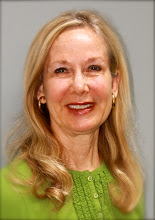
In earlier blogs, I've mentioned the fertility challenges faced by such public figures as Celine Dion and Sarah Jessica Parker, both of whom grappled with secondary infertility (and, earlier, with primary infertility). So, what exactly is secondary infertility? Statistically the most common form of infertility, it is the inability to become pregnant or carry a pregnancy to term following the birth of one or more biological children to the same couple.
The unique dilemma of a couple with secondary infertility is that everyone presumes them to be fertile, unless they had an earlier child with the help of reproductive technology. And, just as primary infertility often is referred to as an invisible disability, secondary infertility seems even more invisible, since it occurs in the context of a couple who are birth parents and very much enjoying that phase of their lives. And that's where one difficulty lies: friends and family may "blame the victim," urging the couple to be grateful for the child(ren) they already have, and admonishing them for taking up emotional time and energy in seemingly futile efforts to conceive again. With that as a backdrop, the couple feels socially isolated in their grief and often question whether they even are entitled to grieve. Their sadness comes amidst an increasing feeling of being left behind, as their siblings and friends have increasing numbers of children, complete with baby showers, christenings, brises and celebrations of their expanding families.
Another source of social isolation may be felt by mothers who took time away from employment to devote time to their child and, hopefully, to enjoy another pregnancy. These women now may be cut off from sources of support by their former co-workers, whom they see far less frequently. Ironically, they find themselves preoccupied with finding sitters to care for their child while they pursue doctors' appointments and infertility treatments. Even as they are eager to indulge themselves in the joys of parenthood, those very joys reinforce for them how special it would be to be able to have more children. Feeling at psychological loose ends as they figure out how to be parents of an only child, couples may find themselves mourning for their intended children as they see their family evolving quite differently from the fantasy family they created.
Secondary infertility, in addition to being a source of anguish for the couple, can also be a concern for their child. It is not unusual for children to ask their parents when they will bring a new sibling home, or whether "mommy is sick," given her sadness and the number of doctors' appointments she may be juggling. Added to the direct inquiries of the child is the parental question of how much they can invest in their infertility treatments, feeling strained as they divide their financial and emotional resources between the child they have and the child they long for. If their infertility diagnosis results in the couple learning that any future pregnancy will be the result of using donor sperm, donor eggs or surrogacy, they face yet another level of decision-making, as they assess whether they can accept a child who is biologically a half-sibling of their existing child. If adoption is contemplated by the couple, they also will confront their capacity genuinely to embrace a new child who has no genetic ties to the family, and whose arrival in the family is known by its members and probably the entire community to be different from that of the big brother or sister. And if the couple decides to end treatment, not pursue adoption, third-party reproduction or various forms of pre-natal adoption (e.g., donor insemination, embryo donation) their resolution to their secondary infertility may be to remain a smaller family than they had hoped for.
Couples struggling with the emotions and the decisions associated with secondary infertility will find some responsive "voices" in my book When You're Not Expecting, as well as by contacting RESOLVE (www.resolve.org ) or the Infertility Awareness Association of Canada (www.iaac.ca ).


No comments:
Post a Comment